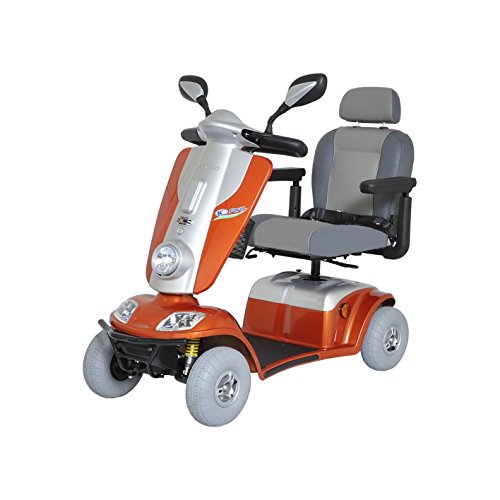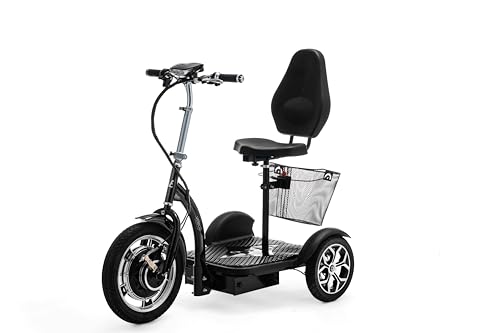What's The Job Market For Mobility Scooters Road Legal Professionals L…
페이지 정보

본문
 Are Mobility Scooters Road Legal?
Are Mobility Scooters Road Legal?Some seniors rely on mobility scooters to get around transportation, which helps them remain independent and avoid moving into an assisted living facility. However, there are some who are confused about the legal requirements for road travel for these scooters.
To be clear, mobility scooters are considered pedestrian vehicles and therefore must follow the same rules as a regular pedestrian would and must obey traffic signals and stop signs. Furthermore, they cannot be used on bicycle-only roads.
Class 1
Class 1 mobility scooters can go up 8 speed and are road legal. These scooters must have a system for reducing their maximum speed on roads. They must also be equipped with a horn, a braking system that is efficient, and lighting. A rearview mirror is also required, which can prevent accidents and ensure road users are mobility scooters allowed on the road safe. Class 2 scooters can be used on roads, however they must be operated at a an lower speed limit of 4 miles per hour. They can also be fitted with indicators and headlights to warn other road users of their presence. They are not permitted in cycle lanes or motorways.
Aside from having proper safety equipment, it's crucial for mobility scooter riders to become familiar with the laws of their state. In Arkansas, for example mopeds and mobility scooters must be registered at the Department of Motor Vehicles. They must also wear a helmet, and wear reflective clothing or materials to ensure visibility. Additionally, they must follow traffic laws and give priority to pedestrians who are walking along sidewalks.
Mobility scooters should be parked in areas that do not block the flow of traffic on foot or cause inconvenience to other road or pavement users. The scooter should not be kept in a location that could be a risk to pedestrians or users of wheelchairs. Avoid parking your scooter in busy areas. You may end being in the path of other vehicles, or damage your scooter.
In addition the speed limit of a class 2 or 3 scooter on pavements is 4 miles per hour, and you must give way to pedestrians. You must also make an audible signal before passing the path of a pedestrian. You are not able to travel on dual carriageways unless are equipped with an amber flashing lamp.
There aren't any specific rules on where to park your scooter. However, it is best to avoid areas that are likely to be crowded. For example, it is not recommended to park your scooter in the front of a cafe or shop, since this could create a mess and block traffic.
Class 2
If you intend to use a mobility scooter in public, you need to be aware of the rules and regulations that govern the use of these devices. You'll need to register your scooter and purchase insurance. You'll also need to learn the highway code in order to drive safely and stay aware of any road hazards. You should take an online safety course for your scooter to learn the proper way to maintain and operate your scooter.
Class 2 8mph mobility scooter motor scooters have a speed limit of 4mph, and are made for indoor and pavement use. They are smaller and easier to maneuver than their four-wheeled counterparts. They can also be disassembled to make them easier to transport in a car. In addition to their low-speed limit, these scooters usually have basic driving controls and are equipped with lights, indicators, and an sound horn.
The DVLA (Driver and Vehicle Licensing Agency) does not require a driver's license for these scooters. Complete an application form V55/4 for the latest models or an application form V55/5 for used vehicles to register your scooter. They aren't allowed on roads, but can be driven along sidewalks and walkways for pedestrians so long as they do not hinder other traffic.
The first step in choosing the best scooter for you is to assess your lifestyle and your schedule. Think about your daily activities and whether you prefer short distances within a larger area or take longer trips outside. Then, think about your medical history and the kinds of outdoor surfaces you'll come across. Once you've identified your needs, test-drive different models to see which suits you.
Before purchasing a class 3 scooter you must be over 14 years old and have a valid UK driver's licence. You also need to have an insurance card that is valid and register your scooter with the DVLA. These models aren't exempt from road tax, like class 2 scooters. You'll also need to obtain a certificate of fitness from your physician to prove you're capable of the task. In addition to having your scooter registered you'll also need to wear helmets and comply with all road laws. You can get more details regarding registration of mobility scooters and safety requirements by visiting the DVLA website.
Class 3
Contrary to popular belief you don't need an operating license to drive a scooter. However there are a few requirements to be fulfilled. To ensure your safety and that of others, it is recommended to wear a helmet when you are riding your scooter on pavements or roads where pedestrians may cross. Additionally, ensure that your scooter is registered with DVLA and that it has the appropriate insurance protection in place. It is also important to follow the essential road rules, and always wear the seatbelt.
Class 2 scooters can reach a maximum speed of 4mph and are primarily designed for indoor or outdoor use. They are smaller and more maneuverable, and are able to be disassembled and transported in a vehicle. Class 3 mobility road scooters scooters are designed for use on roads and pavements. They also have additional safety features, such as lights reflective reflectors, indicators, an horn, and effective braking systems.
Although you don't require an authorization to operate a class 3 scooter, you do have to register it with the DVLA and insure it. Also, you must obey the Highway Code, so it is important to familiarize yourself with the Highway Code before you start riding your scooter on roads and pavements. Additionally, it is a good idea to take part in an instructional driving course for mobility scooters prior to attempting to take a ride on the roads, as this will help you get used to the controls as well as the general driving rules.
A class 3 scooter is allowed on the roads, but not on motorways, bus lanes or cycle-only' lanes. It is also not permitted to travel on dual carriageways that have a speed limit of more than 50mph.
At Aspire2 We can assist you in deciding what type of mobility scooter is best suited for your needs, and we offer a wide selection of accessories and services to aid your travels. We're here to answer any questions you may have, and we can even arrange a test drive in our Lewes showroom.
Licensing
Mobility scooters can be a useful tool for people who have lost some or all of their ability to walk due to a health condition, or age. These battery-operated devices can allow people to regain their autonomy and enhance their quality of life, especially when traveling long distances. However, there are mobility scooters road legal a number of important aspects to take into consideration when using a mobility scooter that can help ensure safety and compliance with local laws and regulations. These include wearing a safety helmet and using reflectors and lights at night, and keeping your device in good condition.
Most states define mobility devices as pedestrian devices and not vehicles. Therefore, they're not required to be licensed or registered with the Department of Motor Vehicles (DMV). However, a lot of municipalities have specific rules and guidelines to be adhered to when operating a mobility scooter. This could include wearing a helmet, adhering with traffic signals, and observing speed limits. It is also not permitted to ride a scooter on the highways or on roads because they aren't designed to be used in these environments. This can pose a danger to the rider and other road users.
The maximum speed that mobility scooters can operate on pedestrian walkways and sidewalks is usually 4-8 mph, but this can differ based on the location. Riders must be mindful of pedestrians and be mindful of their surroundings when operating the device, particularly in areas that are crowded.
Furthermore, New Hampshire law requires that all scooters are equipped with functional signaling devices such as turn signals and horns, to improve visibility and promote safer interactions on roadways. This is an important safety element that should not be overlooked. It is also recommended to wear a helmet, and also have insurance to protect yourself from injury and damages.
In the end, the decision to get a mobility scooters for road use scooter is contingent on each individual's unique needs and preferences. For instance, some people might consider that a Class 2 PMD is adequate for their needs and budget while others might prefer an even more powerful and bigger model that has a greater variety of features. When you are considering a purchase it is always recommended to speak with a medical professional to make sure that the mobility scooter you choose is suitable to the user's lifestyle and medical requirements.

- 이전글5 Common Myths About 8mph Mobility Scooter For Sale You Should Avoid 24.09.08
- 다음글Togel Resmi Indonesia Tips To Relax Your Everyday Lifethe Only Togel Resmi Indonesia Trick That Every Person Must Know 24.09.08
댓글목록
등록된 댓글이 없습니다.